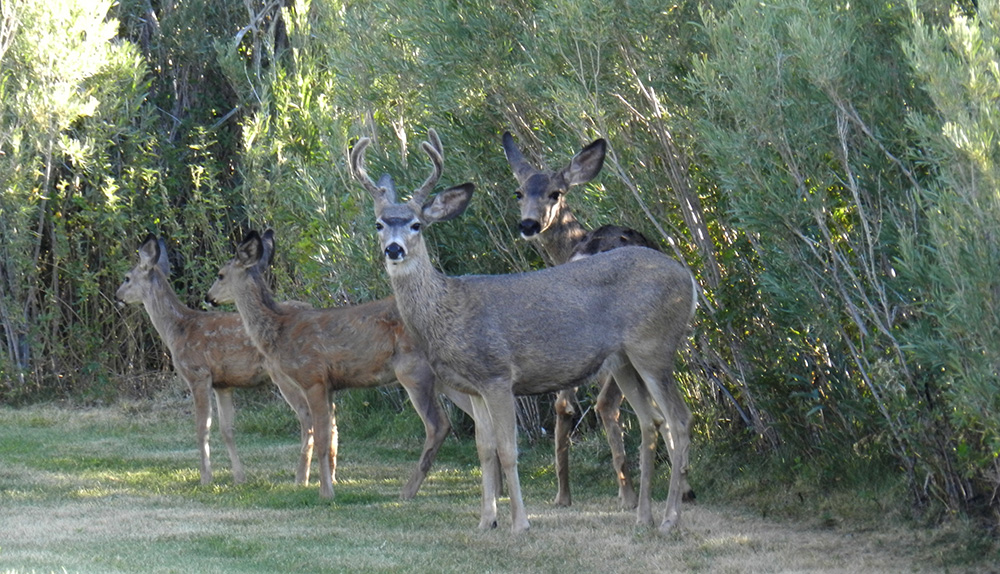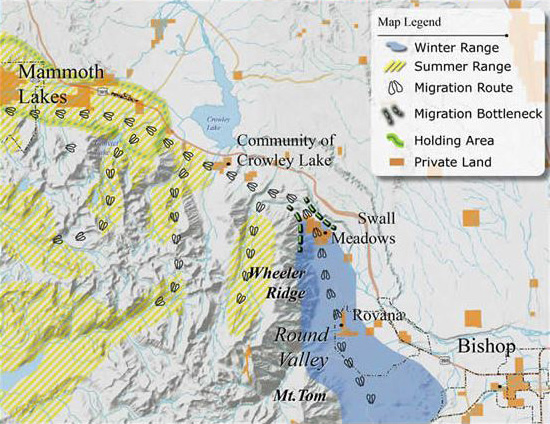
This post was written by Gabrielle Renteria, 2015 Bookstore Assistant, 2016 Mono Lake Intern, 2016–2018 Project Specialist.
Dear travelers and locals alike,
If you’ve ever spent time driving Highway 395, especially during fall or spring, you’ve most likely had the chance to see one of the Eastern Sierra’s many mule deer.
These beautiful animals are part of the Round Valley mule deer herd. Every spring they migrate to higher elevations to give birth and feed on the foliage of alpine meadows, returning each fall to the valley, where there is often less snow and more foliage during the harsh winter months.
But this journey can often be treacherous; exposing deer to increased threats from mountain lions and speeding cars. Speeding increases your chances of hitting deer as well as other wildlife. Not only is this devastating to the deer, but it will most likely damage your car, ruining your day as well. So I ask you, please think of our four legged neighbors as you enjoy this scenic road. You could save their life, and your own.
Happy travels,
Gabby, Project Specialist
More information about mule deer and their migration can be found here.


